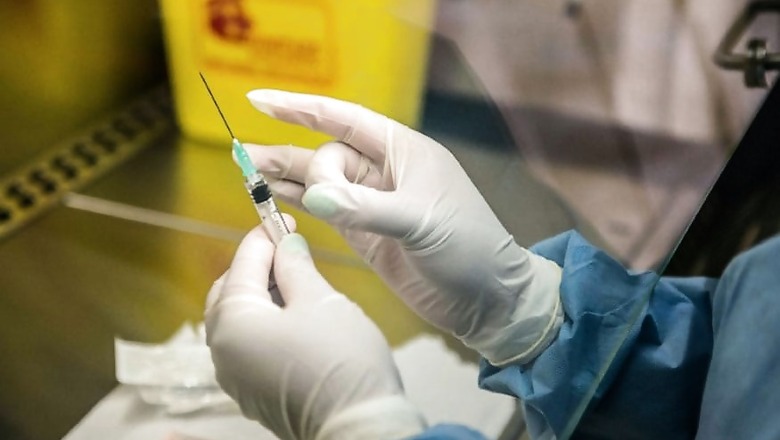
views
Every year, more than 1.4 million children across the world die due to diarrhoea and pneumonia, which is more than all other childhood illnesses combined together. This is even more prevalent in places with limited access to health services, nutritious foods, basic sanitation and hygiene.
India alone contributes to 10% of all global diarrhoeal deaths among children below the age of 5 years. Globally, rotavirus is the most common cause of diarrhoea and India bears one of the highest burden of rotavirus diarrhoeal deaths (22%) in the world.
Estimates suggest that 27% of childhood diarrhoea and pneumonia deaths could be averted with the use of three vaccines: Hib, pneumococcal conjugate vaccine (PCV) and rotavirus vaccine (RVV). The World Health Organization (WHO) recommends the inclusion of rotavirus vaccine in national immunization programmes.
So far, rotavirus vaccine has been successfully introduced in 10 states —Haryana, Himachal Pradesh, Andhra Pradesh, Odisha, Assam, Rajasthan, Madhya Pradesh, Tamil Nadu, Tripura and Jharkhand. The vaccine is being provided free-of-cost by the government as it continues its expansion in 2018.
As Uttar Pradesh gears up to launch the vaccine, it is important to understand how you can safeguard your newborn from rotavirus infection with timely vaccination.
1. What is rotavirus?
Rotavirus is a wheel-shaped, highly contagious virus and the commonest cause of severe diarrhoea among children that can even lead to death. This infection may affect children during all seasons but the infection peaks during the winter (December-February).
2. What are the symptoms and how can it be treated?
Rotavirus diarrhoea usually hits with a sudden onset of watery stool, often accompanied with fever and vomiting and sometimes, pain in the abdomen. Symptoms may range from mild to severe and last for 3-7 days. There is no medicine currently available to treat rotavirus infection. However, rotavirus diarrhoea can be most effectively prevented through rotavirus vaccine.
3. How does the rotavirus infection spread and who is most at risk?
All children are at risk of contracting rotavirus infection, irrespective of their socio-economic status. Infections mostly occur in infants, who are also at an increased risk of dehydration, shock and death. The rotavirus is highly contagious and is spread through the faeco-oral route, when an infected child or its caretaker’s hands come in contact with water or food. The virus is resilient and can survive on hands and surfaces for long periods of time.
In malnourished children, the diarrhoea can worsen with higher chance of dehydration and death if not treated adequately. A single episode of diarrhoea increases the risk of death of a child by 8 times, according to a study published in The Lancet.
4. What is the burden of rotavirus diarrhoea in India?
Rotavirus diarrhoea is responsible for approximately 40% of hospitalisations and deaths due to diarrhoea in India. Each year, about 78,000 deaths occur due to rotavirus diarrhoea in India. India also records about 8.7 lakh hospitalisations each year and nearly 32.7 lakh outpatient visits in children under 5 years of age due to Rota viral infections among under-five children. The economic burden of rotavirus diarrhoea is over Rs 1000 crores/year. Each episode of rotavirus costs over 7% of average annual income of Indian families, enough to push low income families below poverty line.
5. How can we prevent rotavirus infection?
Vaccination is one of the best ways to prevent rotavirus infection. General measures to prevent diarrhoea like good hygiene, frequent hand washing, safe water and food consumption, exclusive breastfeeding and vitamin A supplementation reduce the risk of infection, but rotaviral vaccine is the only definitive prevention.
6. How effective is the rotavirus vaccine? Is the rotavirus vaccine being used in any other country in the world?
Rotavirus vaccine is very effective in preventing rotavirus diarrhoea. The vaccine also provides herd immunity to unvaccinated older children and adults, by reducing the overall disease in the community.
Children in all countries – regardless of sanitation levels – can get infected with rotavirus, which is why rotavirus vaccines are being rolled out in countries like the US and UK. Rotavirus vaccine is currently being used in national immunisation programme of 95 countries. Mexico recorded 50% drop in diarrhoea related deaths among children under the age of 5 years after the introduction of the vaccine in 2007. In India, private practitioners have been using it for several years
7. How is the rotavirus vaccine being introduced and rolled out in India?
The National Technical Advisory Group on Immunisation in India had recommended a phased introduction of rotavirus vaccine in India’s Universal Immunization programme in 2014-15. So far, the vaccine has been successfully introduced in 10 states of the country namely Haryana, Himachal Pradesh, Andhra Pradesh, Odisha, Assam, Rajasthan, Madhya Pradesh, Tamil Nadu, Tripura and Jharkhand. The vaccine is being provided free of cost by the government as it continues its expansion in Uttar Pradesh.
8. Will vaccination with rotavirus vaccine prevent all diarrhoea?
Diarrhoea is caused by many organisms. However, rotavirus vaccine is effective in preventing diarrhoea due to rotavirus, which is a major cause of diarrhoea in children.
Three doses of oral rotavirus vaccine should be given to the child starting at 6 weeks of age and then 10 and 14 weeks of age. Five drops of the vaccine should be administered to the child in each dose.
Author is a Senior Paediatrician at SGPGIMS, Lucknow. Views are personal



















Comments
0 comment